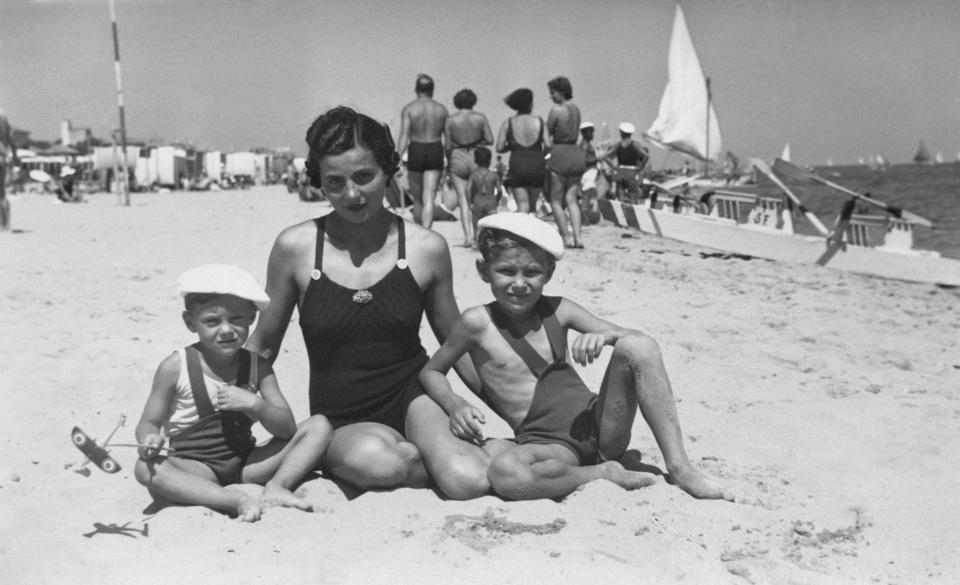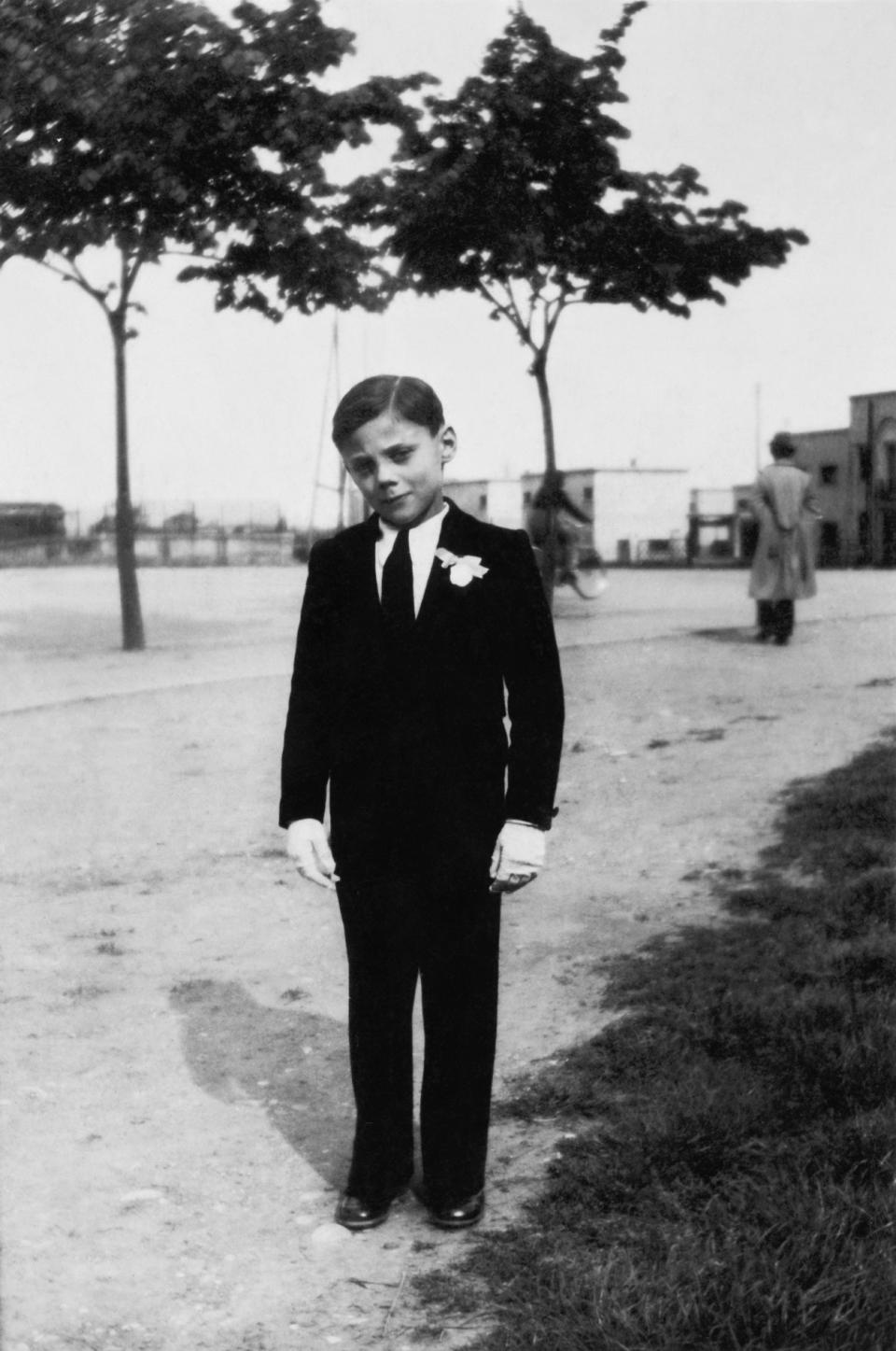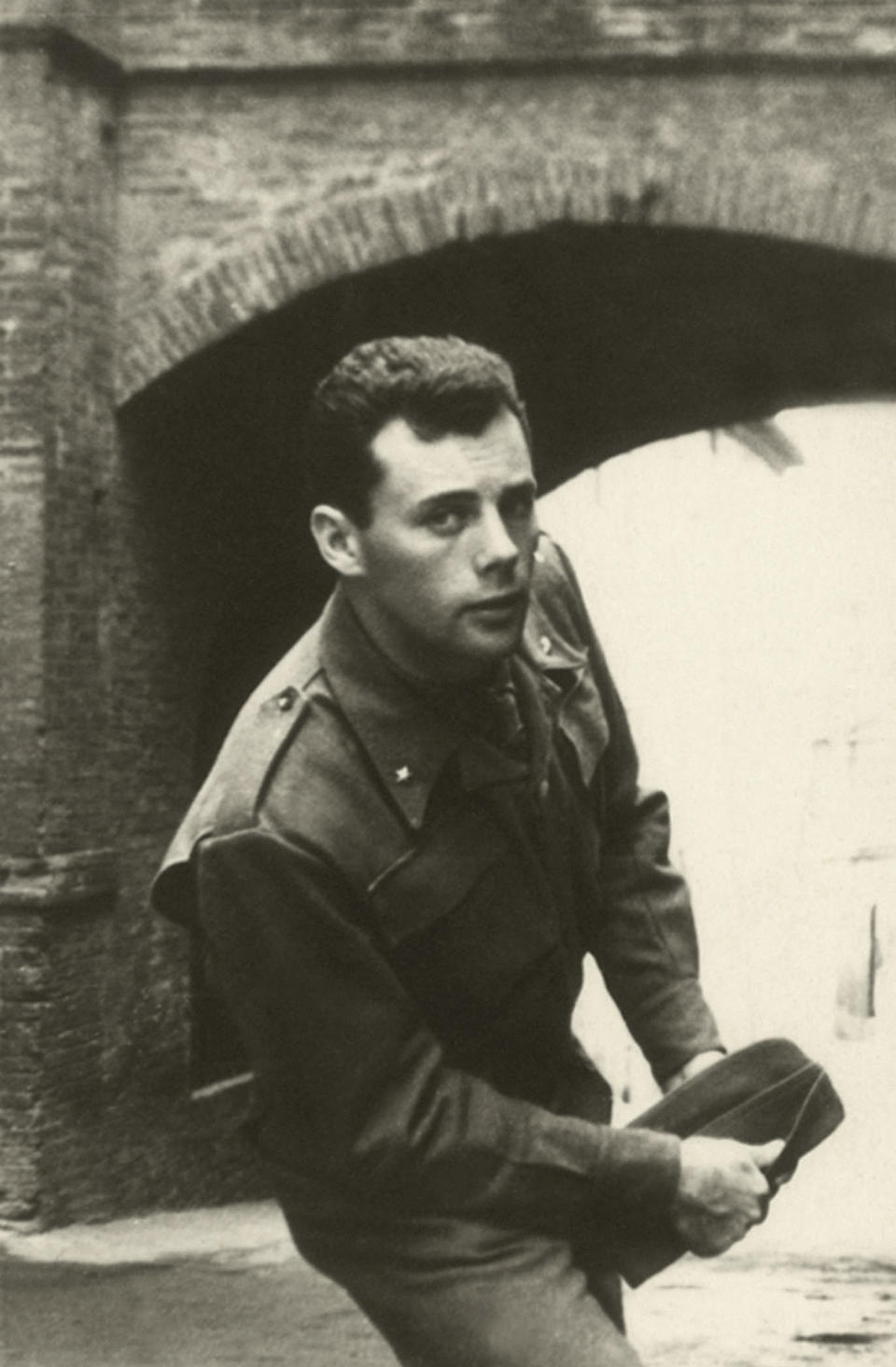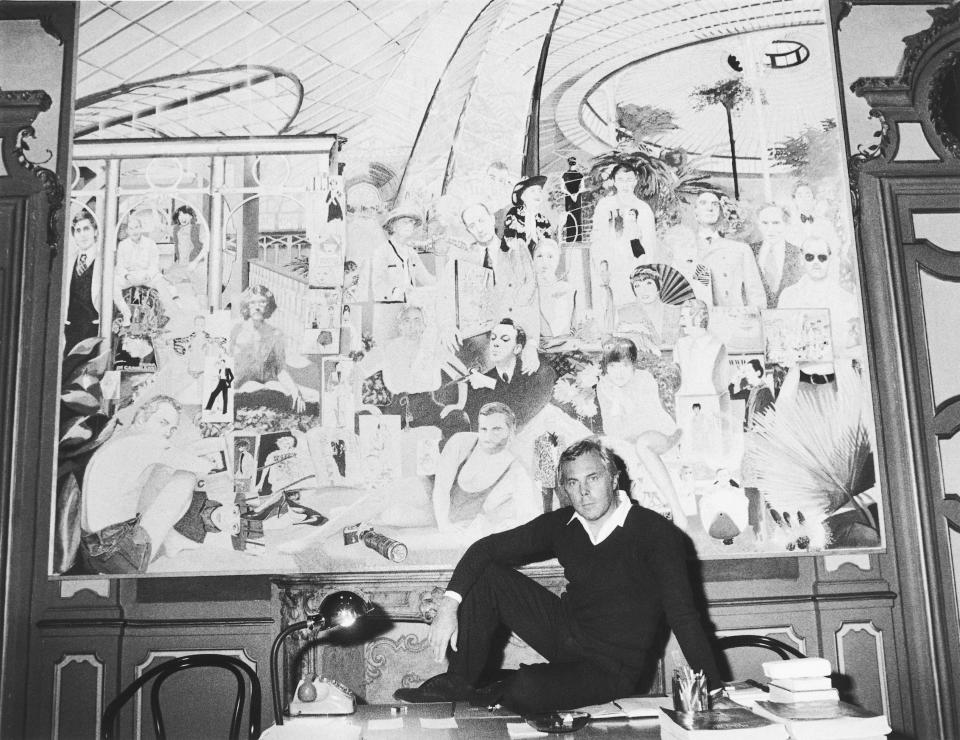Giorgio Armani Opens Up in Autobiography
- Oops!Something went wrong.Please try again later.
- Oops!Something went wrong.Please try again later.

MILAN — “Me, in my own words.”
Giorgio Armani’s autobiography “Per Amore” will be released in the U.S. on Tuesday, published by Rizzoli, an evolution of the illustrated tome published in 2015 that celebrated the 40th anniversary of the designer’s namesake brand.
More from WWD
The book includes personal photos of the designer spanning from his early childhood days, to those with A-list friends such as Sophia Loren, and on the runway with models. But this version expands Armani’s written account of several events that marked his life, including his thoughts on recent world events.
“I chose a title that is both soft and provocative, which is surprisingly representative of my character. I am pragmatic and rational, but my actions all come from the heart,” Armani explains in the book. “That is why the scattered thoughts collected in this book are written ‘out of love’.”
He realizes that he may be seen as “composed, stern and, for some, terribly cold,” but he borrows a definition from artist Wassily Kandinsky: “I’m like a piece of ice with a flame burning inside.”
For the love of what, he muses. “Of expression, of vision, of taste, of style,” is his response.
In the book, Armani defines himself as “a man who gets things done, not one who just talks about them” — an understatement of sorts, as the designer, who holds the roles of chairman, chief executive officer and creative director of his namesake company, has built a global fashion group that closed 2022 with sales of 2.35 billion euros, up 16.5 percent compared with 2021, and retail sales turnover estimated to exceed 6.5 billion euros.
However, he believes “each success is a point of departure for a new challenge,” detesting the idea of resting on his laurels.

Armani, especially in recent years, has often said he has sacrificed much of a personal life for his work, but in the book he underscores the importance of having family and friends to support him, although “trust[ing] only a few people.”
He admitted his doubts about writing an autobiography, and whether “even a person who loves my designs would really want to know anything of my childhood, or how I got started.” However, since the first edition of the book was a success, he says, returning to those early musings “can be useful to many, in different ways. To those who want to work in fashion, perhaps, but also to those who are just curious.”
Since 2015, things did not only change in his profession, he observes, but “of much greater importance,” the pandemic “was an alarm bell, a wake-up call. I thought a great deal and acted quickly, finding myself close to people as never before. This closeness led me to rethink this book, to enrich it, turning it into a very personal document: one of commitment, devotion, vision. Fashion may be the backdrop, but what it really talks about is life.”
The first part of “Per Amore” dwells on his childhood and youth, and his desire to become a doctor, after reading A.J. Cronin’s “books about being a country doctor had made a deep impression on me.” After two years, he realized he did not have the focus “to study such a demanding subject,” and decided to contribute to help out his family. A funny anecdote follows — and indicative of what was to come — as Armani recalls how, joining the military service in 1955, he “took a small wardrobe for all occasions” that included a tennis racquet, which, arriving at the recruit training center in Siena “they kindly suggested I send back home,” and that “there would be no tennis courts” for the recruits.

After working as a window dresser at La Rinascente in Milan, Armani recalled that his “first truly professional job was working with the menswear buyers” at the store. But questioning their “deep-rooted habits,” he moved on and started to work with “Signor Nino” Cerruti at Hitman in 1965, tasked with creating a new image for men, conceiving the deconstructed jacket that eventually made fashion history.
The designer writes about his meeting with his late partner Sergio Galeotti; pays tribute to the partnership with Gruppo Finanziario Tessile (GFT) and its chairman Marco Rivetti and his “profound impact on the global distribution of Italian labels,” and reminisces about those “wonderful years” before the tragedy of Galeotti’s illness and death. “I lived as though I were holding my breath,” Armani says of that time. “Most people thought I wouldn’t be able to make it, all except the people closest to me,” such as his family and Leo Dell’Orco, who is defined as his right-hand man today. Dell’Orco appears in a few photos, also with Armani’s nephew Andrea Camerana. The designer’s sister Rosanna, and his nieces Silvana and Roberta are also photographed.

Armani will turn 89 in July and he addresses the changes brought about by time. “Growing means adapting the perfect world of ideas to the imperfect world of reality. It takes a lifetime to do so, but you’ll succeed in the end.” He writes that he has learned to “tone down” his intransigence. He admits to wanting the best, aspiring to perfection, but realizes “more deeply now that to err is human.”
With maturity comes “telling it like it is,” as in the title of one chapter, the best way to communicate, he believes. Armani recalls his “powerful gut reaction” during the COVID-19 pandemic, penning an open letter to WWD, reproduced in its entirety in the book, lamenting “the overproduction of garments and a criminal nonalignment between the weather and the commercial season.”
Unfortunately, two years after the start of the health emergency, “I see that, in spite of all the words that have been said, not much has changed. Actually, nothing at all has changed: the same exponential number of collections, the same desire to be there, the same fashion shows presented with a great deployment of means. We have gone back to exactly where we were before, perhaps with even greater anxiety, as if to make up for a period when we couldn’t do any of those things.”
He admitted to staging a show in Dubai to celebrate the 10th anniversary of the Armani Hotel there, but underscored he did nothing else after that event, which he made sure would have the smallest impact possible on the environment. “I try to remain a clear thinker, to see things for what they are, to act according to my conscience. The shock of the pandemic taught me a very important lesson and I have no intention of forgetting it,” and commits to staying true to what was said at that moment.
“At this point in my life and career, it is also a way to leave behind a personal legacy and a method on which the Gruppo Armani can base itself in the future, when I am no longer here. Care for the planet, people and the community are the cornerstones of this way of thinking. Without fanfare, without sensationalism. By doing, and nothing more, with the lucidity and the pragmatism that have always set me apart. The world is filled with words, but it is the actions, the facts, that speak.”
All the revenues derived from the royalties of the book will be donated by Armani to Save the Children Italian Onlus.

Best of WWD

